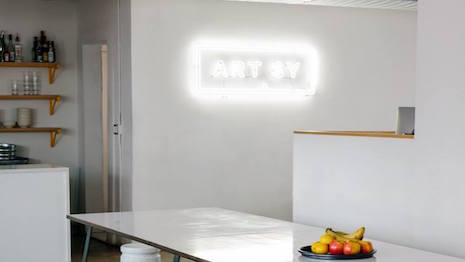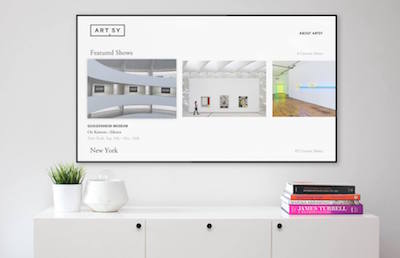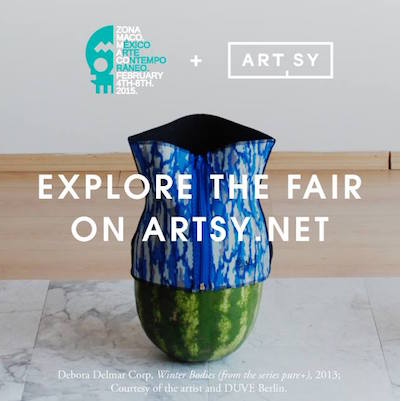 Image courtesy of Artsy
Image courtesy of Artsy
NEW YORK – Fine art is at the top of the luxury pyramid, and today’s luxury brands should strive to be modern-day Medicis by becoming patrons, says an Artsy senior executive.
At Luxury Interactive 2016’s “Supporting the Arts: How Artsy is Opening its Storytelling Doors for Brands” keynote, the platform’s president and COO worked to demonstrate why advertising dollars should be allocated toward the support of the arts. Aside from being a public good, advocating for the arts enhances a brand’s stature and allows it to tap into an audience that is dedicated, involved, knowledgeable and financially established.
"Luxury brands have been supporting the arts for a long time, and there’s a good reason for that,"said Sebastian Cwilich, president/COO of Artsy. "Art is very much the top of the luxury pyramid.
"The art world is ultimately selling $50 worth of paint and canvas for an arbitrarily large sum of money, so it’s all brand and it’s all context," he said.
"But beyond the fact that it’s the right thing to do, and that it’s relevant because art is the top of the luxury pyramid, I’d like to convince you that recent developments in the art market make this a particularly opportune time for brands to become patrons of the arts."
Painting patronage
Recent developments in the art market have presented an opportune time for brands to become patronages. Mr. Cwilich compared brand marketers to the Medici family of the 16th century, known for their patronage of the arts in Florence and Venice, Italy.
The art market is currently valued at $64 billion, and is made up of two, equal halves that function similar but cater to different consumer segments. The upper level is for works valued at more than $1 million, with pieces being purchased by approximately 10,000 individuals, then there is the art valued high, but under the million dollar mark.
Both market halves rely on relationship building, but the aggressive, stock broker-like approach of art dealers does not work for the individuals purchasing pieces priced below $1 million. Since there is more demand, and the price points are still high, the traditional model does not scale properly and is inefficient at the lower level.
Artsy on Apple TV
Art platforms have been slow to emerge because, since art is at the top of the luxury pyramid, it was difficult to convince galleries, art fairs, artists, auctioneers and collectors to embrace an online method. On par with the rest of the luxury sector, the art world was slow to adapt because just like brands, the arts rely on associations and is hypersensitive to public perception.
The arts have seen a spike in interest and appreciation from the general public and has benefited greatly from visual social media.
Artsy’s platform creates opportunities for consumers to learn about and collect artworks through its partnership with more than 5,000 galleries, art fairs, auction houses and museums. Artsy’s partnership has successful ROI results as well, with hundreds of known sales occurring at galleries, with sale prices averaging $10,000.
Artsy art fair promotion
Mr. Cwilich, as an example, cited a recent auction held by Philips in London, where Artsy users placed 40 percent of lots in the auction and attributed to 8 percent of the final sales.
"Our goal is to establish long-term mutually beneficial partnerships with a relatively small number of leading companies," Mr. Cwilich said. "Companies that believe that this user-centric model of modern-day arts patronage is a savvy way to elevate their brand and reach the world’s first global scaled art audience, online and offline."
The art of content
Editorial content on Artsy is also a growing aspect of its platform, and its written features are projected to become the most-read art publication by the end of the year, thus tapping a very valuable audience demographic.
During his presentation, Mr. Cwilich noted that Artsy is an industry leader for engagement with 70 percent of its videos being watched to completion and its newsletter commanding a 50 percent open rate by 100,000 subscribers.
While Artsy is a digital native company, the platform also leverages its brand offline through partnered events during art fairs such as Art Basel Miami Beach and collaborators such as Chanel and Louis Vuitton.
Many luxury brands lend their support to the arts through efforts that are not overly marketed or developed as native advertising, but demonstrate a shared appreciation.
For example, French atelier Chanel is celebrating female creativity through a collaborative art project launched in partnership with i-D magazine.
Chanel and i-D’s The Fifth Sense will see six multi-disciplinary artworks commissioned by female creative talents and displayed between the end of the year and throughout 2017. Each of the commissioned pieces explores how the power of fragrance and a sense of scent can influence the creative process.
The content created for The Fifth Sense is housed on i-D magazine’s Web site in a dedicated tab on its homepage. I-D magazine will update the hub daily with coverage of inspiring and creative women from various genres.
Featured content will delve into the personal insights of these women's work and visions. Chanel and i-D magazine will present these features through articles, photo stories and videos (see story).
"How can brands that would like to support the arts and get in front of that valuable demographic take advantage of it?" Mr. Cwilich asked.
"Given the much-discussed evolution away from interruption-based advertising and toward a more user-centric model combine with the guaranteed distribution of a platform like Artsy, I propose that it is a particularly opportune time to return to the patronage model," he said. "Generating world class art content, not overt advertising for your brand, not native ads. Really true, editorial art content and generously gifting that to your clients."


